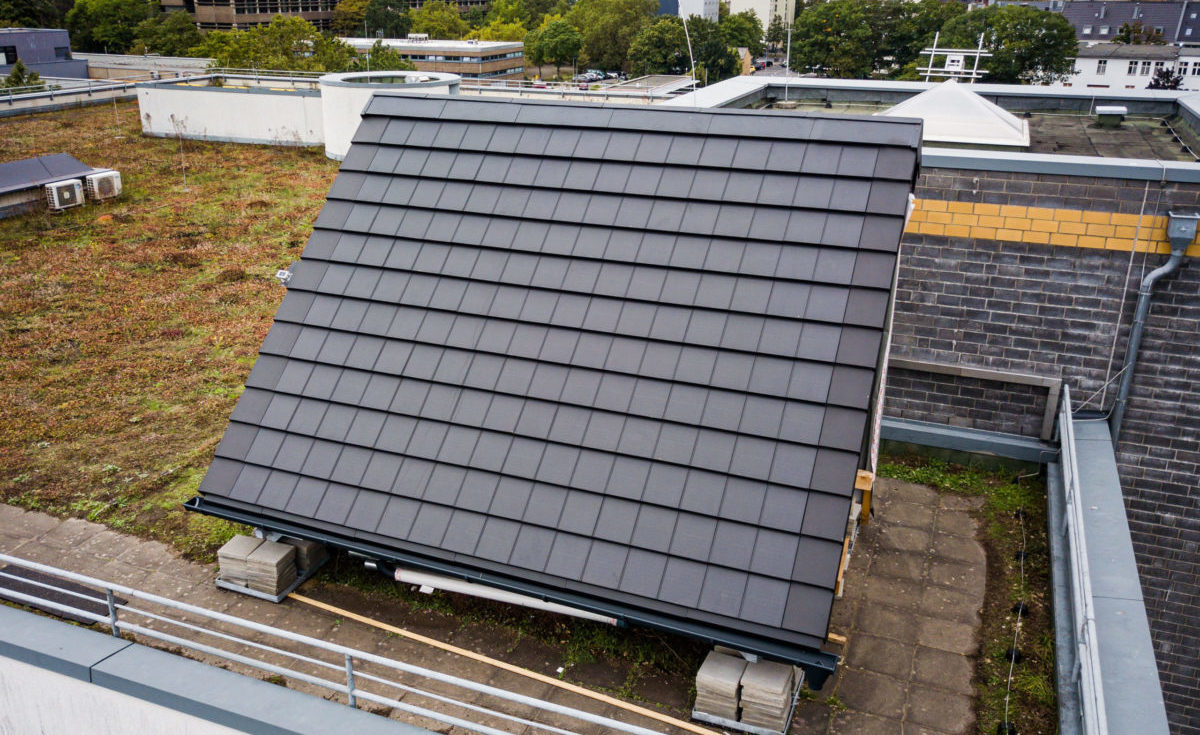When thinking of Italy, one of the first images that comes to mind is a local hamlet with narrow streets, bordered by red brick houses with terracotta roof tiles. But is that architecture still alive in 2023, or is the traditional Italian housing being replaced wholesale by more technologic skyscrapers and automatized homes?
Absolutely yes, it’s alive. And Italians owe this, in part, to solutions such as photovoltaic terracotta tiles.
There is a real human imprint in this kind of product. It feels to be designed in order to preserve the wonderful Italian landscape and heritage, and not permit a complete homologation in housing that comes from serial production. The solution perfectly integrates with historic Italian villages and cities, such as Vicenza, the city where it all started.
To understand the reason for such a product, we fly to Camisano Vicentino where a small workshop started the production of photovoltaic terracotta tiles (i.e. Invisible Solar) more than a decade ago. Camisano Vicentino, one of the many Italian heritage cities, was a clear example of history in need of technological adaptation, and the owners of the workshop started to project a solution for heritage cities all across the world.
How does it work?
The functioning of terracotta roof tiles is based on the principle of low molecular density. Each module is formed with a non-toxic, recyclable polymer compound that is specially processed to boost photon absorption. Inside the module are embedded ordinary monocrystalline silicon cells. The surface, opaque to the eye and transparent to the sun's rays, allows light to enter and feed the cells.
What are the benefits?
There are several benefits to the introduction of such sustainable items. First of all, these photovoltaic tiles maintain intact the aesthetic continuity of buildings and landscapes. They encourage the reuse of old buildings, and also discourage uncontrolled urbanization that ruins the ecosystem.
Secondly, the undergoing photocatalysis activates a natural process that purifies the air and cleans the module surface. The change of nature of this new kind of tile does not compromise safety, that is, the resistance of the tile that withstands high static loads.
And of course, there’s the sustainability. These photovoltaic tiles are made from non-toxic materials, including natural or reused materials, all of which are recyclable. Most importantly, these tiles provide a smart solution to the access of renewable energy in historic centers.
The production of clean energy sets everyone free from the big energy supply companies and from possible geopolitical consequences on the international energy markets.
This kind of solution, similar to the tiny house movement, represents another example of sustainable housing, where humanity can give back some relief to the environment that hosts us all.

/https%3A%2F%2Ftf-cmsv2-smithsonianmag-media.s3.amazonaws.com%2Ffiler_public%2F1d%2F41%2F1d4161f0-6053-4824-bd43-822bd53a55b1%2Fopener.jpg)




